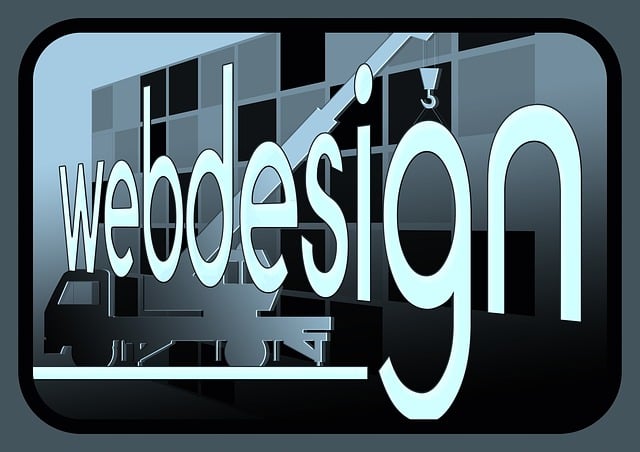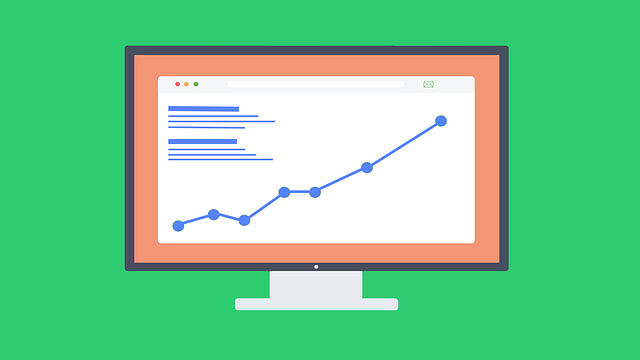TL;DR:
Effective e-commerce web design balances aesthetics and functionality to drive conversions. Key elements include:
– User Experience (UX): Intuitive navigation, clean layouts, fast loading times, high-quality product visuals, and detailed descriptions.
– Visual Appeal: Minimalist designs, vibrant accents, interactive elements like animations, and engaging photography build trust and boost engagement.
– Mobile Responsiveness: Optimized for diverse screen sizes to cater to smartphone users, ensuring seamless browsing and improved conversion rates.
– Accessibility: Usability features for all users, including those with disabilities, promote inclusivity and enhance customer satisfaction.
– Payment Integration: Effortless checkout processes using secure third-party solutions reduce cart abandonment and increase sales.
– SEO Optimization: Strategic keywords in titles, meta descriptions, headers, and content, along with mobile-friendly design, internal linking, and structured URLs, improve search engine rankings and user engagement.
Web design is a critical driver of e-commerce success, directly impacting KPIs such as conversion rates, average order value (AOV), and bounce rate.
In today’s digital landscape, a compelling web design is crucial for e-commerce success. This article guides you through the essential aspects of crafting effective online stores, from understanding unique design requirements to implementing best practices in user experience (UX) and visual trends.
Learn about key elements that drive conversions, mobile optimization strategies, accessibility, seamless payment integrations, SEO tactics, and measuring success through key performance indicators. Discover how to create a captivating e-commerce experience that leaves a lasting impression.
Understanding E-commerce Web Design Requirements

E-commerce web design goes beyond creating an online storefront; it’s about crafting a seamless and engaging user experience that drives conversions. To effectively meet these requirements, designers must consider several key factors specific to e-commerce platforms. Firstly, intuitive navigation is paramount, allowing customers to effortlessly browse products, filter options, and find relevant information quickly. Responsive design is another critical aspect, ensuring the site adapts seamlessly to various devices, from desktops to mobile phones.
Moreover, visual appeal and branding play a significant role in capturing and retaining customer interest. High-quality product images, compelling headlines, and strategically placed calls-to-action (CTAs) can significantly influence buying decisions. Additionally, e-commerce websites should integrate secure payment gateways, clear shipping information, and user reviews to build trust and foster confidence among online shoppers. Effective web design for e-commerce involves balancing aesthetics with functionality, ultimately aiming to create a platform that encourages exploration, simplifies transactions, and enhances customer satisfaction.
Key Elements of Effective E-commerce Websites

Effective e-commerce websites are more than just digital storefronts; they’re carefully crafted experiences designed to engage and convert visitors into buyers. Key elements that contribute to their success include intuitive navigation, high-quality product visuals, and compelling copy that highlights benefits rather than just features. A well-designed web design should streamline the user journey, making it effortless for customers to find what they want, understand its value, and complete their purchase.
Responsive layouts that adapt seamlessly across various devices are non-negotiable in today’s mobile-first world. Optimized loading speeds and clear calls-to-action (CTAs) further enhance the user experience, fostering trust and encouraging conversions. Incorporating customer reviews and social proof also builds credibility, while a secure checkout process ensures peace of mind for online shoppers, reinforcing the brand’s reliability and setting the stage for long-term customer loyalty.
User Experience (UX) Best Practices for Online Stores

Creating a seamless user experience (UX) is paramount for any successful e-commerce website. Firstly, prioritize intuitive navigation to ensure customers can effortlessly browse products and find what they’re looking for. A clean layout with clear categories and search functionality goes a long way in enhancing usability. Additionally, optimize page load times; fast-loading sites improve user satisfaction and boost conversion rates.
Visual elements play a significant role in UX. Incorporate high-quality product images and consider implementing features like zoom functions to provide detailed views. Ensure consistent design aesthetics across the entire site for a cohesive experience. Mobile responsiveness is also essential, as many customers shop via smartphones; a mobile-friendly design ensures accessibility and a positive user journey regardless of device.
Visual Design Trends in E-commerce Web Design

In the dynamic landscape of e-commerce web design, visual trends play a crucial role in capturing the attention of online shoppers and driving conversions. Modern designs prioritize clean lines, minimalist aesthetics, and ample white space to create an uncluttered shopping experience. Color palettes often lean towards neutral tones with accents of vibrant shades, adding a touch of energy while maintaining a professional look. High-quality visuals are non-negotiable; stunning product images, lifestyle photography, and graphic elements enhance the overall appeal and build trust with potential customers.
Interactive and animated features are gaining traction, making static pages dynamic. These include responsive animations, video backgrounds, and interactive sliders that provide a unique and engaging user experience. Typography trends focus on readability and style, with a mix of modern sans-serif fonts and classic serifs for headings, adding character to the design while ensuring text remains legible on various devices. Incorporating these visual design trends in e-commerce web design not only keeps the site appealing but also aligns with user expectations, contributing significantly to better engagement and increased sales.
Optimizing for Mobile and Different Screen Sizes

In today’s digital era, optimizing for mobile and different screen sizes is no longer an option but a necessity for effective web design, especially in e-commerce. With a vast majority of online shoppers using their smartphones and tablets, websites must be designed with a responsive approach to ensure a seamless user experience across all devices. This involves creating flexible layouts that adjust seamlessly to various screen dimensions, from small mobile phones to large desktop monitors. A well-optimized web design for e-commerce not only enhances usability but also improves conversion rates by reducing bounce rates and increasing time spent on the site.
E-commerce websites should prioritize fast loading times, easy navigation, and clear product displays regardless of the device used. This means utilizing lightweight images, optimizing code, and employing techniques like lazy loading to minimize page load times. Additionally, ensuring that key features, such as search bars, filtering options, and call-to-action buttons, are easily accessible and well-positioned on smaller screens is crucial for a successful mobile e-commerce experience. By catering to the diverse needs of mobile shoppers, businesses can foster customer satisfaction and loyalty in the competitive world of online retail.
The Role of Accessibility in E-commerce Web Design

In the dynamic landscape of e-commerce, accessible web design is no longer a consideration—it’s a necessity. As online stores become the primary touchpoint for businesses and consumers alike, ensuring your website is usable by everyone, regardless of their physical abilities or technological limitations, is paramount. This includes implementing features like keyboard navigation, alternative text for images, and clear, concise content to assist users with visual or cognitive impairments.
A well-designed e-commerce site that prioritizes accessibility fosters inclusivity, boosts user engagement, and enhances overall customer satisfaction. By embracing Web Design best practices tailored to accessibility, businesses can tap into a broader market segment, improve conversion rates, and build a positive brand image as an advocate for digital equality.
Integrating Payment Gateways and Shopping Carts Seamlessly

In a seamless Web Design for e-commerce, integrating payment gateways and shopping carts is crucial for a smooth user experience. A well-designed interface should allow customers to navigate effortlessly between browsing products and making purchases. The shopping cart should be prominent and easily accessible, providing a clear overview of selected items with their prices. This real-time visibility builds trust and encourages conversions.
For payment gateways, the process must be secure, fast, and free from technical glitches. Incorporating trusted third-party payment solutions ensures customers feel safe entering their financial details. A seamless integration that hides complex backend processes behind a smooth frontend experience is ideal. This not only enhances user satisfaction but also boosts sales by reducing cart abandonment rates.
Search Engine Optimization (SEO) Strategies for E-commerce Websites

E-commerce websites, with their sole purpose of driving sales and conversions, heavily rely on effective Search Engine Optimization (SEO) strategies integrated seamlessly into their web design. A well-optimized website not only improves its visibility in search engine results but also enhances user experience, encouraging visitors to browse and ultimately make purchases. Incorporating keywords relevant to the products and services offered is a fundamental SEO practice for e-commerce sites. This involves strategic placement of keywords in page titles, meta descriptions, header tags, and content to attract search engines and potential customers alike.
Beyond keyword optimization, web design plays a pivotal role in boosting SEO performance. Responsive design that adapts seamlessly to various devices ensures your site is mobile-friendly, a crucial factor favored by search algorithms. Additionally, fast loading speeds, intuitive navigation, and well-structured URLs contribute to a positive user experience, encouraging visitors to explore further. Internal linking strategies within the website’s content also play a vital role in enhancing SEO, directing users and search engine crawlers to essential product pages and information resources.
Measuring Success: Key Performance Indicators for E-commerce Sites

Measuring success is paramount in e-commerce, and web design plays a pivotal role in defining key performance indicators (KPIs). These metrics are essential tools to gauge the effectiveness and efficiency of an online store. Conversion rate tops the list; it signifies the percentage of visitors who take a desired action, like making a purchase. A high conversion rate indicates that your web design successfully guides users through the buying journey.
Another critical KPI is the average order value (AOV). This metric reveals the average revenue generated per transaction, providing insight into customer spending habits. Optimizing product page layouts, adding upsell or cross-sell offers, and implementing strategic pricing tactics can help increase AOV. Additionally, tracking bounce rate gives a clear picture of user engagement; a lower bounce rate suggests visitors are interacting with your site, which is vital for understanding user behavior and refining web design strategies.
